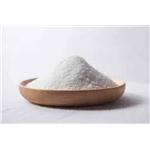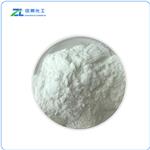- Oleamide
-

- $3300.00 / 1Metric tonnes
-
2024-04-30
- CAS:301-02-0
- Min. Order: 1Metric tonnes
- Purity: 99%
- Supply Ability: 1000tons
- Oleamide
-

- $50.00/ kg
-
2024-04-27
- CAS:301-02-0
- Min. Order: 1kg
- Purity: 99%
- Supply Ability: 5000kg/week
- Oleamide
-

- $6.00 / 1KG
-
2024-04-20
- CAS:301-02-0
- Min. Order: 1KG
- Purity: More than 99%
- Supply Ability: 2000KG/MONTH
Related articles - Oleamide: Physiological effects
- Oleamide is the amide derived from the fatty acid oleic acid. Oleamide is a colorless waxy solid and occurs in nature. Sometim....
- Jul 18,2023
- Applications of Oleamide
- Oleamide is the amide derived from the fatty acid oleic acid. Oleamide is a colorless waxy solid and occurs in nature. Sometim....
- Nov 22,2019
|
| | Oleamide Chemical Properties |
| Melting point | 70°C | | Boiling point | 433.3±24.0 °C(Predicted) | | density | 0.94 g/cm3 | | storage temp. | -20°C | | solubility | Soluble in chloroform (50 mg/ml), ethanol (100 mM), DMSO (~14 mg/ml), and DMF (~14 mg/ml) | | pka | 16.61±0.40(Predicted) | | color | White to off-white | | Water Solubility | Insoluble in water. | | Stability: | Stable for 2 years from date of purchase as supplied. Solutions in DMSO or ethanol may be stored at -20°C for up to 1 month. | | InChIKey | FATBGEAMYMYZAF-KTKRTIGZSA-N | | LogP | 6.882 (est) | | CAS DataBase Reference | 301-02-0(CAS DataBase Reference) | | NIST Chemistry Reference | 9-Octadecenamide, (z)-(301-02-0) | | EPA Substance Registry System | Oleamide (301-02-0) |
| | Oleamide Usage And Synthesis |
| Nonionic surfactant | Oleamide is a non-ionic surfactant and is white powder-like or flake-like at room temperature. It is nontoxic, insoluble in water and soluble in hot ethanol, ether other organic solvents. It is obtained by refinement of vegetable oil. It has special internal and external lubrication effect and is relative stable to heat, oxygen, and ultraviolet. It has various kinds of properties including anti-adhesive, slipping, leveling, waterproof, moisture-proof, anti-settling, anti-fouling, anti-static electricity and dispersion. Its effects of anti-sticking, anti-static and dispersion are very strong with no hydroscopic property. It is mainly used for high-pressure polyethylene (LDPE) film and composite film, multi-layer co-extruded film, gas-bag, super-thin film, and the slipping agent, anti-block and anti-static agent for polyvinyl chloride (PVC) calendaring film, polypropylene (PP) and curtain-coating polypropylene (CPP); it can also be used as the slipping agent and release agent of resins such as ethylene-vinyl acetate copolymer (EVA), poly-formaldehyde (POM), polycarbonate (PC), polyethylene terephthalate (PET) and polyamide (PA); it can also be used as the slipping agent and antistatic agent of PU surface treatment agent and fiber masterbatch; caking inhibiter, flatting agent, slipping brightening agent of plastic table printing (compound) inks and thermoplastic PE powder; the lubricant and dispersant of pigments, colorants and masterbatch; a indispensable excellent aids for functional opening, slipping masterbatch: it can also be used as metal protecting agent and the lubricants of polyolefin material.
| | Erucamide | Erucamide is a higher fatty acid amide and is an important derivative of erucic acid and is refined from vegetable oils. It is as waxy solid with no smell and is insoluble in water. It has certain solubility in organic solvents such as ketones, esters, alcohols, ether and benzene. Since the molecular structure contains long chain and unsaturated C22 chain polar amide group, it has excellent surface polarity effect with high melting point and good thermal stability. It can be as substitutes of other similar additive for being widely applied to other plastic, rubber, printing, machinery and other industries. As the processing aid for polyethylene and polypropylene plastics, it can not only make the products be not bonded and increase lubricity, but also can reinforce the thermoplastic and heat resistance of plastics and the product is also non-toxic. Foreign country has allowed it for being applied to foreign food packaging materials. Add the erucic acid amide into the rubber can increase the gloss of the rubber products, tensile strength and elongation rate and enhance the vulcanization accelerator and abrasion resistance with particularly efficacy in preventing the effect of the sun cracks. Adding it to the ink can increase the adhesion, scratch resistance, offset resistance and dye solubility. In addition, erucic acid amide can also be used as the surface lacquer of the calendared paper, protective films of metal and the foam stabilizer of detergent.
The above information is edited by the chemicalbook of Dai Xiongfeng.
| | Slippery agent | At present time, common domestic varieties include amides (oleamide and erucamide), soaps (calcium stearate) and organic silicon (silicone). Organic silicon is liquid-like and is expensive as well as being inconvenient for adding usage. There is no domestic professional manufacturer and is difficult for application. Soap products, although is cheap, but has an unsatisfactory effect. It also demands a large adding amount and generally can’t be used in moderate-grade or high-grade products. The slippery agent, oleamide and erucamide has many advantages such as affordable price and significant effect, extremely small addition amount (0.05% to 0.3%), no toxicity (certified by the FDA), wide application range and broad application prospect.
Addition of 0.05%~0.3% oleamide to the low-density polyethylene film can not only improve the antistatic property and lubricating properties, but also improve the anti-moisture performance and can significantly reduce the coefficient of friction and adhesion resistance, significantly increase the efficacy of the membrane blowing (extrusion molding) and can effectively prevent the caking between the film and the agglomeration between the pellets. It may also increase the smoothness of the film surface and prevent the dust accumulation in the surface of the product, leading to very smooth plastic products.
In the polyolefin cable material and wholly plastic communication cable material, addition of oleamide (0.05%) can reduce the friction factor from 0.7 to 0.16 while changing its coloring as well as carbon black dispersion and achieve high-speed extrusion of cable aggregate material and improve the smoothness of the inner wall in the cable jacket pipe.
Adding 2-5 oleamide to the polyamide plastic ink can improve the printing performance and lubricity of ink, enhance the water resistance and scratch resistance and anti-offset characteristic (the fouling caused due to that the ink hasn’t become dry yet) and abrasion resistance. In addition, it can also improve the malleability and adhesiveness of the ink on the printed surface, so that the imprinting is clear and has bright color.
| | Uses | The purpose is as following:
1, it is the chemical additives which must been added to the low-density polyethylene (LDPE) film material.
2, it is also the modifying agent of the plastic ink.
3, it can also be used as the lubricants such as polypropylene (PP), polystyrene (GPPS), phenol (PF) resin, antistatic agents and anti-caking additives.
4, it can also be used as polyethylene, polypropylene, synthetic fibers and other color concentrates and cables (insulation) material lubricant and release agent.
5, it can also be used as the additive for polypropylene (seal) tabletting, efficient heat sheet and sealed material.
6, metal protective agent; stabilizer of the melamine tableware products; lubricants, antifreeze additives of the brake; lubricants of the coatings and dispersion stabilizer of the aluminum coating as well as oil drilling auxiliaries.
| | Description | OOleamide (301-02-0) was originally identified in the cerebrospinal fluid of sleep-deprived cats acting as an inducer of physiological sleep in animals.1 Displays agonist activity at cannabinoid CB1 receptors (Ki=8.13 μM).2 Activates PPARγ.3 Produces vasodilator effects in rats.4 Displays neuroprotective effects5 and attenuates sepsis-induced intestinal injury6. | | Chemical Properties | White Powder | | Uses | A brain lipid that induces physiological sleep at nanomolar quantities when injected into rats. This lipid may represent a new class of biological signaling molecules. | | Uses | Oleamide has been used as a supplement in glucose and galactose media to prevent the rescue of galactose-induced Leigh syndrome (LS). | | Definition | ChEBI: A fatty amide derived from oleic acid. | | General Description | Oleamide?is a lipid or a brain fatty acid, that is found in the CSF (cerebrospinal fluid). It is originally obtained from the cerebrospinal fluid of cats, that are sleep-deprived. | | Biological Activity | Endogenous sleep-inducing lipid. Acts as an agonist at the CB 1 cannabinoid receptor (EC 50 = 1.64 μ M). Also appears to potentiate the actions of 5-HT on 5-HT 2A and 2C receptors, and act via an allosteric regulatory site on 5-HT 7 receptors. | | Biochem/physiol Actions | Sleep-inducing brain lipid, which allosterically modulates GABAA receptors and potentiates 5-HT7 serotonin receptor responses. Selective endogenous agonist of rat and human CB1 cannabinoid receptor. | | Synthesis | Oleamide can be synthesized by ammonolysis of fatty acid or esters with ammonia gas at high pressure. | | storage | Store at +4°C | | References | Boger et al. (1998), Oleamide: an endogenous sleep-inducing lipid and prototypical member of a new class of biological signaling molecules; Curr. Pharm. Des., 4 303
Leggett et al. (2004), Oleamide is a selective endogenous agonist of rat and human CB1 cannabinoid receptors; Br. J. Pharmacol., 141 253
Dionisi et al. (2012), Oleamide activates peroxisome proliferator-activated receptor gamma (PPARγ) in vitro; Lipids Health Dis., 11 51
Hernandez-Diaz et al. (2020), Effects of Oleamide on the Vasomotor Responses in the Rat; Cannabis Cannabinoid Res. 5 42
Maya-Lopez et al. (2020), A Cannabinoid Receptor-Mediated Mechanism Participates in the Neuroprotective Effects of Oleamide Against Excitotoxic Damage in Rat Brain Synaptosomes and Cortical Slices; Neurotox. Res., 37 126
Zou et al. (2019), Cx43 Inhibition Attenuates Sepsis-Induced Intestinal Injury via Downregulating ROS Transfer and the Activation of the JNK1/Sirt1/FoxO3a Signaling Pathway; Mediators Inflamm., 2019 7854389 |
| | Oleamide Preparation Products And Raw materials |
|